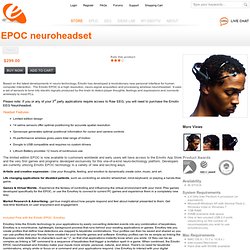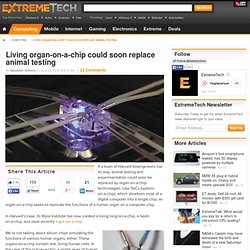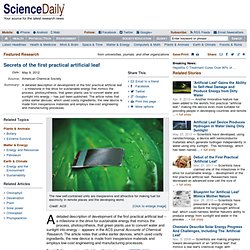

Flight. Weaponry. Biomechatronics. Propulsion. Energy Production and Storage. Artificial Intelligence. High Resolution EEG. Artistic and creative expression - Use your thoughts, feeling, and emotion to dynamically create color, music, and art.

Life changing applications for disabled patients, such as controlling an electric wheelchair, mind-keyboard, or playing a hands-free game. Games & Virtual Worlds - Experience the fantasy of controlling and influencing the virtual environment with your mind. Play games developed specifically for the EPOC, or use the EmoKey to connect to current PC games and experience them in a completely new way. Market Research & Advertising - get true insight about how people respond and feel about material presented to them. Get real-time feedback on user enjoyment and engagement. Included Free with the Emotiv EPOC: EmoKey EmoKey links the Emotiv technology to your applications by easily converting detected events into any combination of keystrokes.
Living organ-on-a-chip could soon replace animal testing. If a team of Harvard bioengineers has its way, animal testing and experimentation could soon be replaced by organ-on-a-chip technologies.

Like SoCs (system-on-a-chip), which shoehorn most of a digital computer into a single chip, an organ-on-a-chip seeks to replicate the functions of a human organ on a computer chip. In Harvard’s case, its Wyss Institute has now created a living lung-on-a-chip, a heart-on-a-chip, and most recently a gut-on-a-chip. We’re not talking about silicon chips simulating the functions of various human organs, either. These organs-on-a-chip contain real, living human cells. In the case of the gut-on-a-chip, a single layer of human intestinal cells is coerced into growing on a flexible, porous membrane, which is attached to the clear plastic walls of the chip. In another example, the Wyss Institute has built a lung-on-a-chip, which has human lung cells on the top, a membrane in the middle, and blood capillary cells beneath.
Secrets of the first practical artificial leaf. A detailed description of development of the first practical artificial leaf -- a milestone in the drive for sustainable energy that mimics the process, photosynthesis, that green plants use to convert water and sunlight into energy -- appears in the ACS journal Accounts of Chemical Research.

The article notes that unlike earlier devices, which used costly ingredients, the new device is made from inexpensive materials and employs low-cost engineering and manufacturing processes. Daniel G. Nocera points out that the artificial leaf responds to the vision of a famous Italian chemist who, in 1912, predicted that scientists one day would uncover the "guarded secret of plants. " The most important of those, Nocera says, is the process that splits water into hydrogen and oxygen. The artificial leaf has a sunlight collector sandwiched between two films that generate oxygen and hydrogen gas. The author acknowledges support from the National Science Foundation and the Chesonis Family Foundation. Scientists Turn Memories into Actual Video Footage [Video]